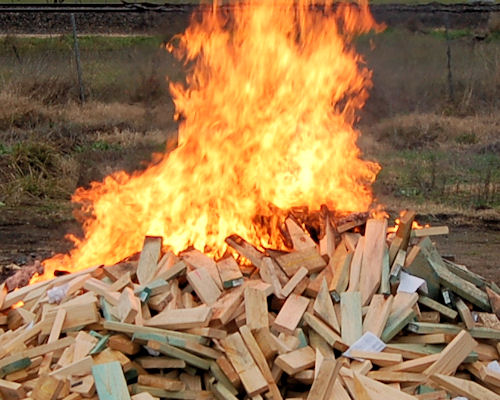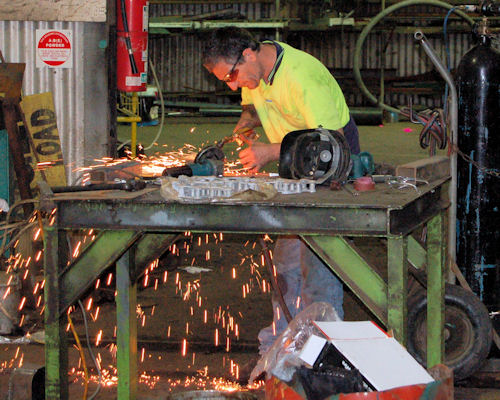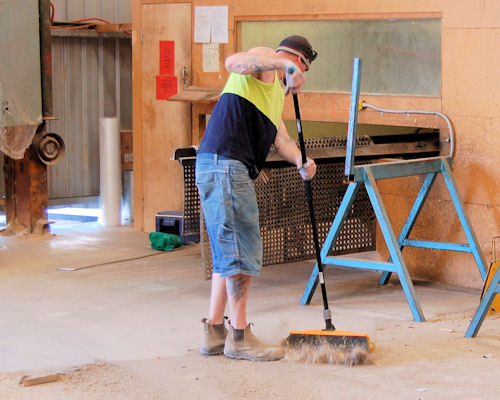On-site fires
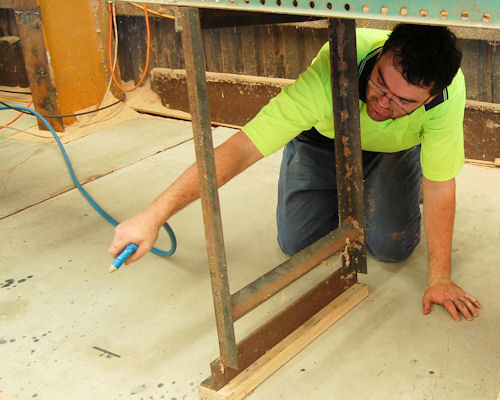 Audio for slide 4 (mp3 |6|KB)
Audio for slide 4 (mp3 |6|KB)
The most obvious example of this is to avoid smoking near gas, petrol or diesel storage tanks or refuelling areas.

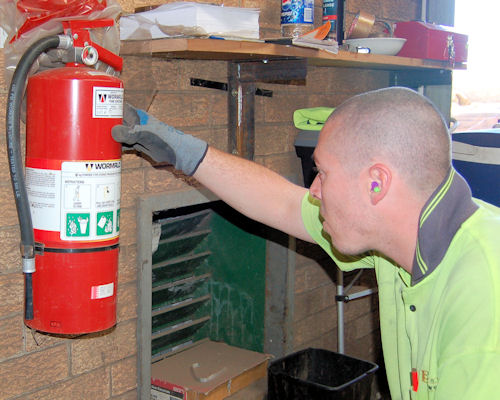 Audio for slide 5 (mp3 |6|KB)
Audio for slide 5 (mp3 |6|KB)
Fire fighting equipment
Fire extinguishers and hose reels are the most common equipment kept to fight fires on-site. Fire extinguishers are colour coded and labelled according to their contents.
It's very important to match the correct extinguisher to the type or class of fire. The contents of some extinguishers may be unsuitable - or even dangerous - if used on the wrong type of fire.
The links below go to tables which show the different classes of fire and the range of fire extinguishers used to combat these fires.

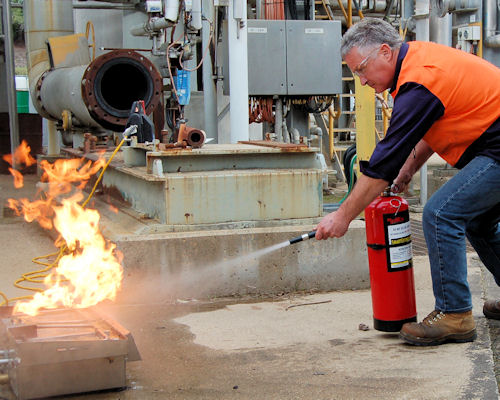 Audio for slide 6 (mp3 |6|KB)
Audio for slide 6 (mp3 |6|KB)
How to use fire fighting equipment
The links below will take you to some basic instructions on how to use fire extinguishers, hose reels and fire blankets. For details on the specific pieces of equipment at your own workplace, make sure you refer to the manufacturer's instructions.
Best of all, see if you can receive face-to-face training in your workplace or at a specialist training centre.


Learning activity
Audio (mp3 |6|KB)Have a look around your workplace to see where the fire fighting equipment is located. Answer the following questions:
- Where are the fire blankets situated?
- Are there any hose reels? If so, where are they positioned?
- Where are the fire extinguishers located? What are their contents and what types of fires are they designed for?
Share your answers with your trainer and other learners in your group.



